Imagine you had a first date with someone you really liked… The date is over. You go home - anxious and unsure of the impression you've made.
You text your date one question: "On a scale from 0 to 10, how likely are they to recommend ... ?" And you're not sure what sore to hope for. Should you want them to recommend? 🙃
In business, relationships are a tad easier game to play. And this article clarifies some important rules of the game. It breaks down NPS questions for you to learn:
⭐️ What types of NPS questions there are
⭐️ How to phrase them
⭐️ How to ask follow-up NPS questions for maximum result
What is an NPS question?
A Net Promoter Score (NPS) question is a question you ask as part of your NPS campaigns. It helps you gauge the overall customer loyalty and the strength of your brand. It's an important metric helping you to assess whether or not you can expect stable growth.
The standardized, basic NPS question format is:
"On a scale from 0 to 10, how likely are you to recommend us to your friends or colleagues?"
The biggest strength of this classic NPS question is that it's easy to answer. While NPS benchmarks vary depending on the industry, NPS surveys tend to have high response rates across all of them—with the average ranging from 30% to 40%.
There are 2 main types of NPS survey: the relational and the transactional one:
The relational NPS survey question
As the name suggests, these are the questions you ask your customers to gauge the quality of your relationship.
Relational NPS surveys are usually distributed in regular intervals—monthly, quarterly, or yearly. By sending them regularly, you stay on top of the health of your customer groups, and you establish points of reference to keep an eye on your own performance.
The transactional NPS survey question
Unlike relational net promoter score surveys, which are distributed regardless of where the customer is in their journey, transactional NPS surveys are sent after a particular transaction. For example, after a customer has:
🤝 Contacted customer support team
🤝 Purchased a product or service
🤝 Upgraded their plan
🤝 Used a new feature
Transactional NPS questions are an excellent way to measure customer satisfaction on a micro-level. They help you stay on top of the performance of critical touchpoints, moments in the entire customer journey, or employees (if you trigger the survey after a customer-employee interaction).
The results of the transactional net promoter score survey are more actionable, but they don't give a general picture or overview of your services' health.
💡 YOU MAY ALSO BE INTERESTED IN: ‘Have you ever recommended’ survey template (Alternative to NPS)
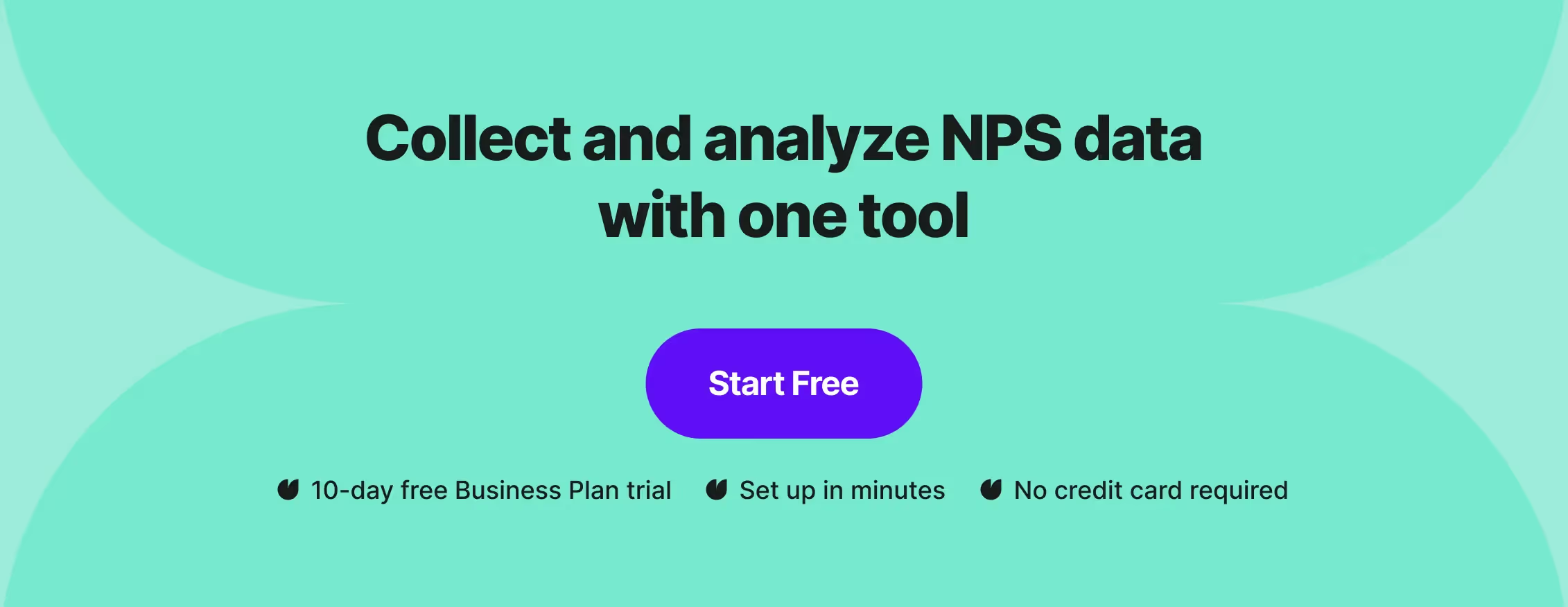
Relational NPS question variants
NPS survey questions don't leave much room for creativity. Having said that, you can play with its form and alter it based on the information you're trying to learn. Here are some of the NPS questions variations:
"On a scale 0-10, how likely are you to recommend our services to the people like you?"
By phrasing the question in such a way, you signal that you're asking about the services you provide (as opposed to a product you sell). Maybe, on top of selling products, you offer services associated with the product and want to assess only the quality of your services.
Or, you're sending the survey to a customer segment after launching a new line of services catering to their needs, and you're trying to feel the pulse.
Such phrasing also helps you find out if the respondent is the right target group.
"How likely are you to recommend our product to the people you know?"
This question directs customers' attention to a product and measures customer satisfaction and readiness to recommend.
On top of measuring customer loyalty, the question can be part of a referral marketing campaign. E.g., if a customer gives you a top score, you can entice them to recommend or leave an app store review.
Based on your experience so far, how likely are you to recommend our product as a self-study app?
By starting with "based on your experience", you prompt respondents to review their customer experience with you. You make the question more specific and spare respondents from having to guess what exactly you're asking about. You encourage them to revise their experience from a particular angle: You're checking if the app you offer is succeeding as a self-study app.
Asking a similar NPS question can be helpful if your app offers more functionalities and you want to focus on one of them only. Or if you're pivoting your product roadmap and need to verify whether or not you're succeeding at it.
Based on your recent purchase, how likely are you to recommend us to people like you?
This is a transactional NPS question that helps you verify the quality of particular services. Instead of asking "the people you know", you want to know if the person is willing to recommend your products to people that share some similarities.
Perhaps, you offer luxury goods not everyone can afford. In such a scenario, a question formulated in this way should give you a more accurate picture. Respondents won't lower the score based on its price tag and the fact that its too pricey for some people they know.
How to ask follow-up questions for best results?
NPS data is quantitative, and such is the nature of NPS survey questions. They help you figure out if your NPS is good or not and give you only a general overview of the situation. They are great openers of the conversation and are usually followed by an open-ended question that gives you more insights.
If, at this point, you worry about respondents abandoning surveys - don't:
Customer feedback management tools like Survicate record even partial survey responses on an ongoing basis which means you never miss an insight—even if a user drops out. Survicate also supports conditional follow-up questions, so you can tailor the experience based on each respondent's score and collect meaningful qualitative data. So, dare to ask! 😎
Just like Taxfix. They ask not one, but three follow-up questions in their NPS survey. “We already have their attention—why not try to get something else?" Krzysztof Szymański, Head of CRM at Taxfix explains. With these actionable insights they're able to segment users to personalize their customer experience better with more suitable content.
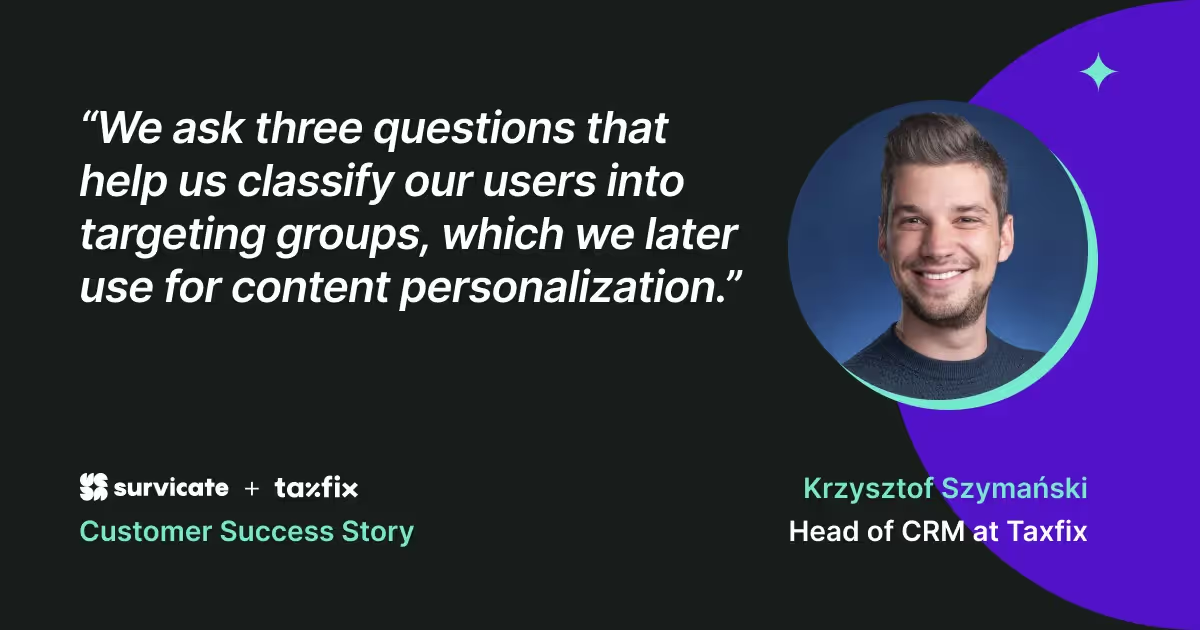
Read the whole Taxfix customer story
1. Use the power of promoters
Promoters are the happy customers you have. They are your potential (or actual) brand ambassadors that can drive growth in a powerful way. They are a rather unlikely source of constructive criticism, but their feedback makes excellent input for your marketing campaigns.
Make the most of the promoters' potential with questions like:
"So happy to see you pleased! We're curious. What is it that you like most about us?"
"You're the best! We're thrilled to have you as a client! Can you help us spread the word and write a short review?"
"Fantastic! Thanks for the score! Is there anything we can do for you? (Do you have any questions about any other products we offer?)"
As you can tell, all the messages above are pretty direct and energetic. As long as it is on-brand, be direct and try to reflect what the customers feel. They've just shown you some love with a high NPS score. Reciprocate!
2. Befriend your detractors
Net Promoter Score detractors can be easily seen as nuisances. Yet, their negative feedback may turn out to be your friend rather than a foe. Embrace their openness with you. Take a closer look at their negative customer experience and see if there's anything that needs improvement. Unhappy customers can be real innovators. (Well, some of them, at least 🙂↕️)
Consider asking them the following questions:
"We're sorry to hear that. In an ideal world, how would you like things to work?"
"So sorry to see you're unsatisfied! Help us improve! Would you mind telling us why such a score?"
"We're sorry to see your score. What should we change?"
"That's not the highest score... Help us improve. Who should we learn from and why?"
You can also look at how their CSAT and NPS answers compare. More often than not, NPS detraactors give positive responses to CSAT surveys.
3. Engage with passives
Passives are neutral or indifferent to your brand. They may seem harmless. But, their lack of brand loyalty makes it easy for them to walk away.
Every interaction with customers from this group is a chance to connect with them or surprise them.
Your customers' indifference may be a sign that they haven't adopted the product well and do not know how to get real value from it. So, use the opportunity to talk to them to educate or help them.
Here are a couple of inspirations on how to engage with respondents. Again—try to sound direct but not intimidating or self-imposing:
"Thanks for your response! We appreciate you took the time! We want to do better. Is there anything we can do to improve?"
"Thanks for taking the time! We appreciate that! We're curious: Is there anything we can do to make you more satisfied? Help us out!"
"Thank you for your response. Is there anyhow we can help you with the product?"
Passives may also be disengaged because they don't believe taking part in a survey makes sense. To win them over, you may need to go the extra mile.
Find out if it's worth it. (Perhaps it's simply not your target group.) If it is, follow the NPS surveys up with an email with a personal touch. And, make some effort to show them you care: surprise them with a discount. Or, arrange a non-upselling call to help out.
Whatever you choose to do, make sure the communication has a personal touch. You're onto relationship building in the end.
💡 LEARN MORE ABOUT THE NPS RESPONDENTS CLASSIFICATION: Free NPS calculator and NPS Calculation: How to Calculate the Net Promoter Score (NPS)
How to improve the NPS response rate?
The higher the response rate, the more valid the NPS survey results. Here are some practical ways to improve your NPS question response rate:
1. Segment your email lists and personalize content
It's already proven that sending targeted and personalized emails brings better results than blasting the same NPS email to your entire audience.
Split up your email list into segments based on preferences, items purchased, location, time spent with your company, etc.
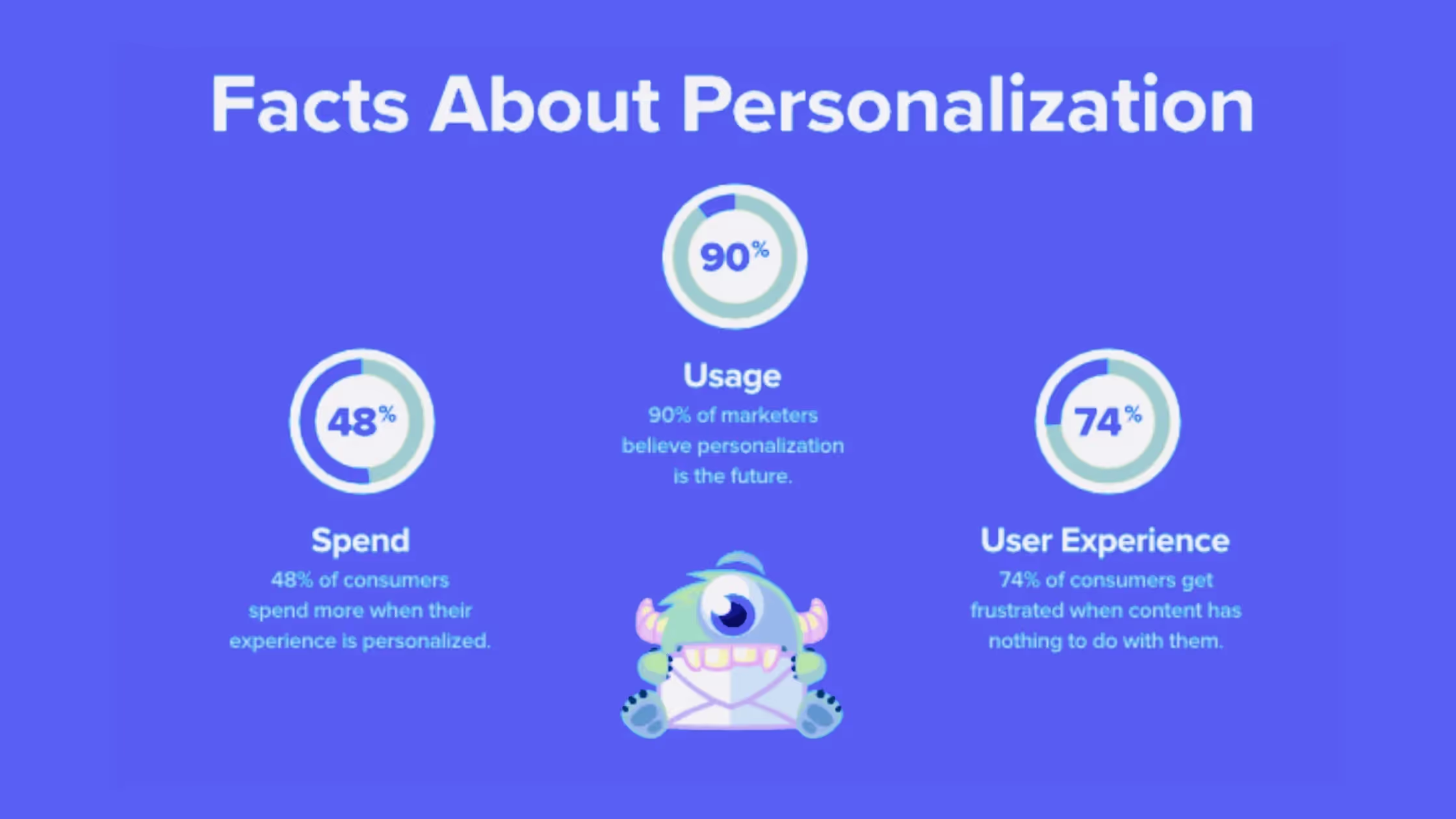
Also, use a tool that integrates with other marketing automation tools, such as ActiveCampaign and GetResponse.
Best survey tools, like Survicate, allow you to add personalization tags and even embed NPS surveys directly into emails for higher response rates. Plus, Survicate’s AI survey builder helps you craft relevant follow-up questions and analyze open-ended responses faster.
2. Ask targetted and personalized questions
Before sending an NPS survey, make sure you know what you want to find out and who you're talking to.
By tying your NPS survey questions to the context of your respondents (e.g., a transaction they've just performed) or to their experience reflected in their scores, you make the conversation feel real.
Otherwise, your customers will have inkling they are treated like cogs in a machine—ones whose opinion doesn't really matter or change much.
Make them know you care about their customer experience and respect their time!
3. Get the timing right
Not so long ago, I got a call. A car dealer I had contacted through a web form was trying to sell me a car. The woman called in the middle of my working day and did not bother to ask if I had time.
While she was talking (with the speed of a machine gun), insisting on drawing up a deal for me to sign, my boss asked me an urgent question on Slack. It was clearly not the best time. The woman was persistent, so it took me a while before I managed to end the call.

Frustrated and annoyed, I blacklisted her number to never have to fend off a similar call. To avoid such plight, whenever you contact your customers—be it in person or through a survey you send—be attentive.
Make sure you chat them up when they have the time. Determining when to interact will make all the difference in the survey response rate and the quality of feedback you get.
So, don't ask a customer about the quality of a product if they haven't received the item yet.
Similarly, you don't interfere when it distracts and annoys them: Asking about the quality of your online banking services in the middle of ordering a transaction won't go down too well.
4. Make NPS surveys look neat
A great way to make NPS survey questions get more answers is to make them on-brand. You can make your survey fully custom, add your own branding, and, most importantly, make sure the survey looks great on mobile devices. This seemingly negligible step will improve user experience and help you build awareness of your brand.
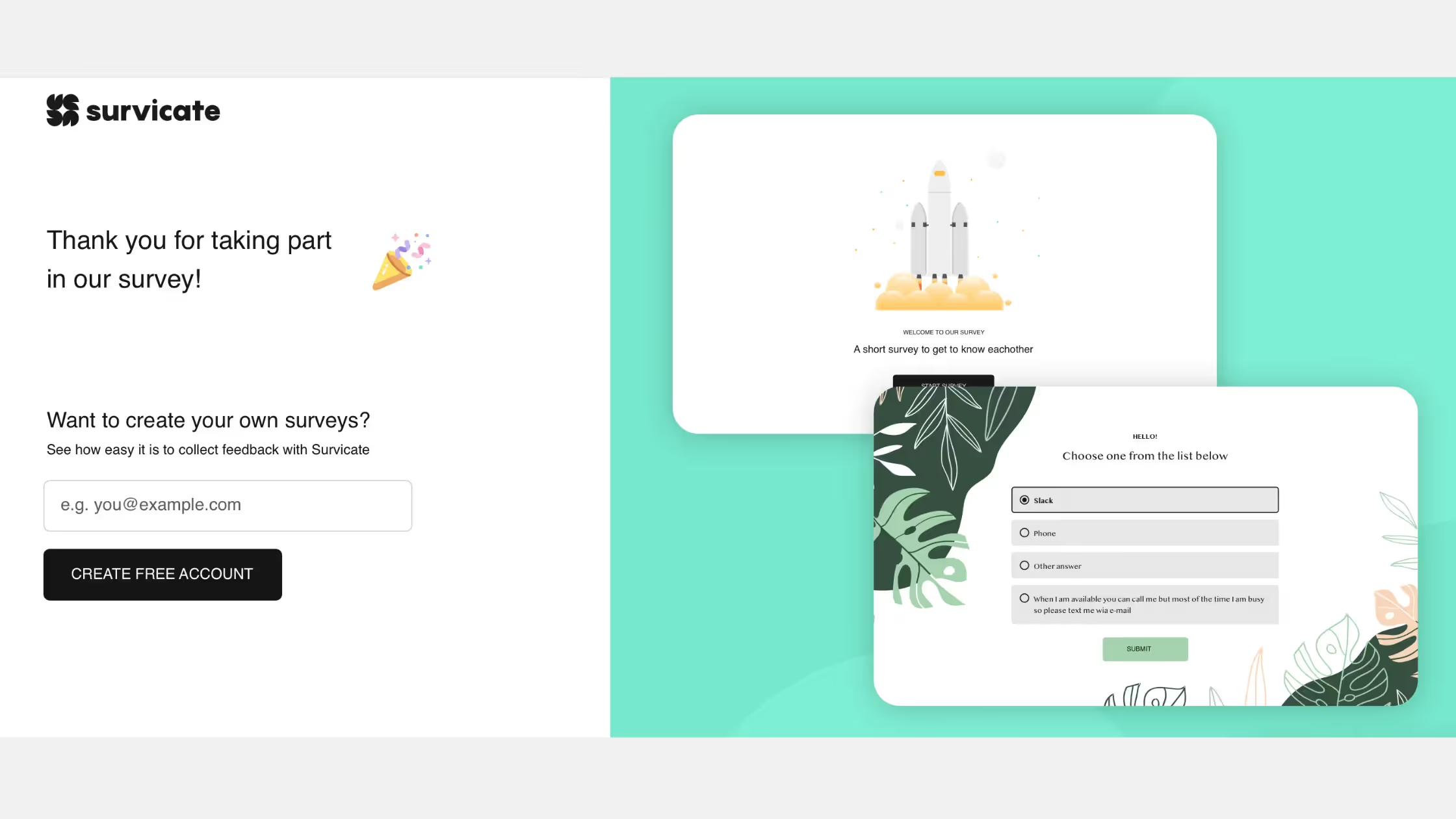
5. Don't give up after one try. Follow up
When you send an email with an NPS survey question, you're competing with hundreds of other emails your customers get every day. Chances are, they won't reply right from the bat. It's perfectly okay to invite them to participate in the survey more than once.
Once they respond and leave their answers, make sure you follow up. This will not affect your current survey results, but it will increase your chances of a satisfying response rate the next time you ask.
How to send an NPS survey?
When it comes to communication channels, all of them are fine.
The survey distribution channel you'll choose should depend on why you're sending the NPS survey and whether the survey questions are relational or transactional.
In the case of the latter, the choice of the survey distribution channel is pretty straightforward - reach the customers where they are:
If you measure NPS for SaaS and you're checking the experience in the app, trigger NPS surveys there.
Tools like Survicate support targeted in-product NPS surveys via mobile SDKs and website widgets, so you can capture feedback at just the right time—without disrupting the user experience.
Have they just completed the checkout in your e-commerce web app? Depending on how the user flow is designed, chat them up in the web app or their email boxes or send them a text.
To choose the right channel, always have a given customer persona and their digital journey in mind.
When to ask an NPS question?
There is no single correct answer here. Once again, this will largely depend on your business model and what you sell.
However, there are some general tips you can follow. If you have an ecommerce website, it's a good idea to ask a transactional NPS question once the order has been completed (to gauge the customers' opinions on the order/checkout process) and once more when the order arrives.
If you run a SaaS product, you can run an NPS survey or ask questions after some time (e.g., free 14-day trial) or after they have tried out a key feature of your app.
All in all, a rule of thumb is to give the customer enough time with the product or service so that they have the chance to provide meaningful feedback.
If your aim is to ask relationship NPS questions, you can have regular intervals when you send out survey questions—e.g., once or twice per year. Whereas transactional questions can be asked much more frequently, depending on what you sell and who your customer is.
Wrapping up
Though simple, NPS questions are a powerful way to measure customer loyalty and brand sentiment. And when paired with other customer success metrics and thoughtful follow-up questions, they can spark improvements that lead to happier, more engaged users.
With Survicate’s NPS software, you can run both relational and transactional NPS surveys across email, web, mobile, and in-product experiences—all from one easy-to-use platform. Automatically calculate your NPS score, analyze trends with AI-powered insights, and connect results with tools like Intercom, Slack, or HubSpot to take immediate action.
Whether you’re nurturing relationships or optimizing specific touchpoints, Survicate helps you collect, analyze, and act on customer feedback in real time.
Start honing feedback collection today with Survicate. Sign up for a 10-day free trial to check out all Growth plan features + up to 25 survey responses.








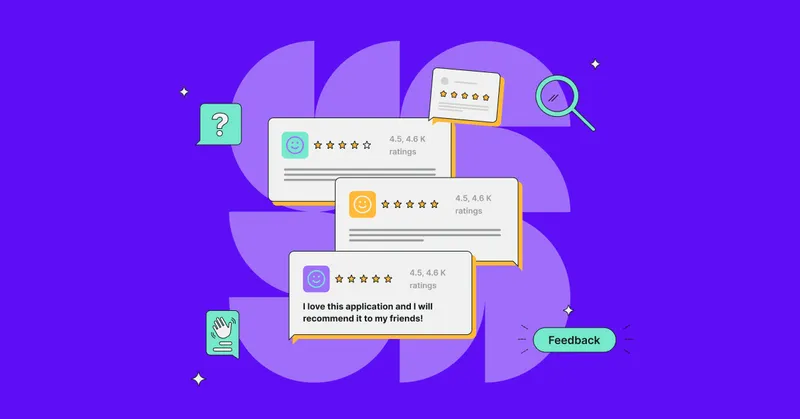
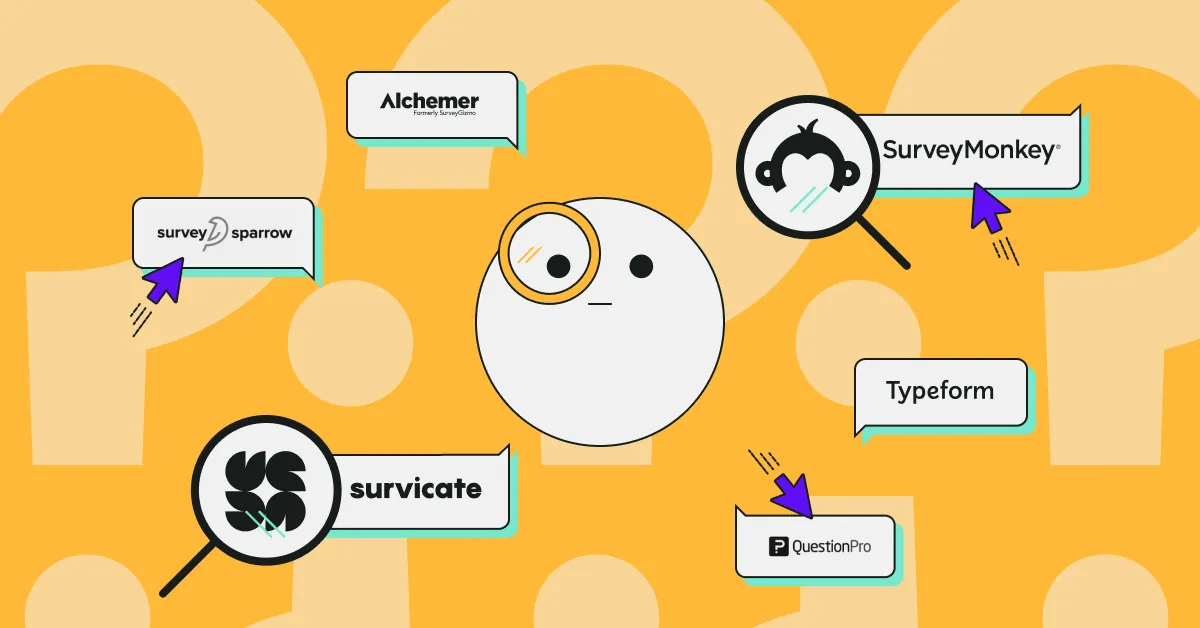

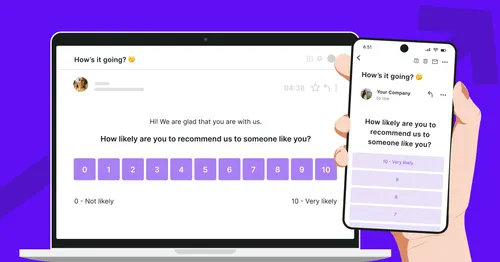
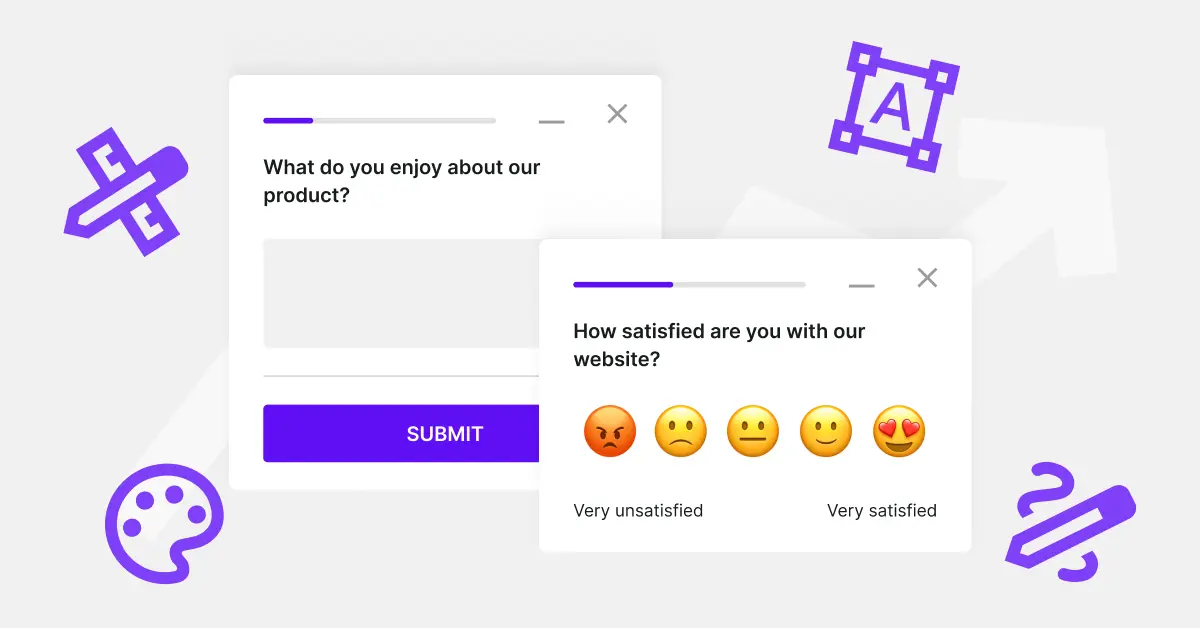
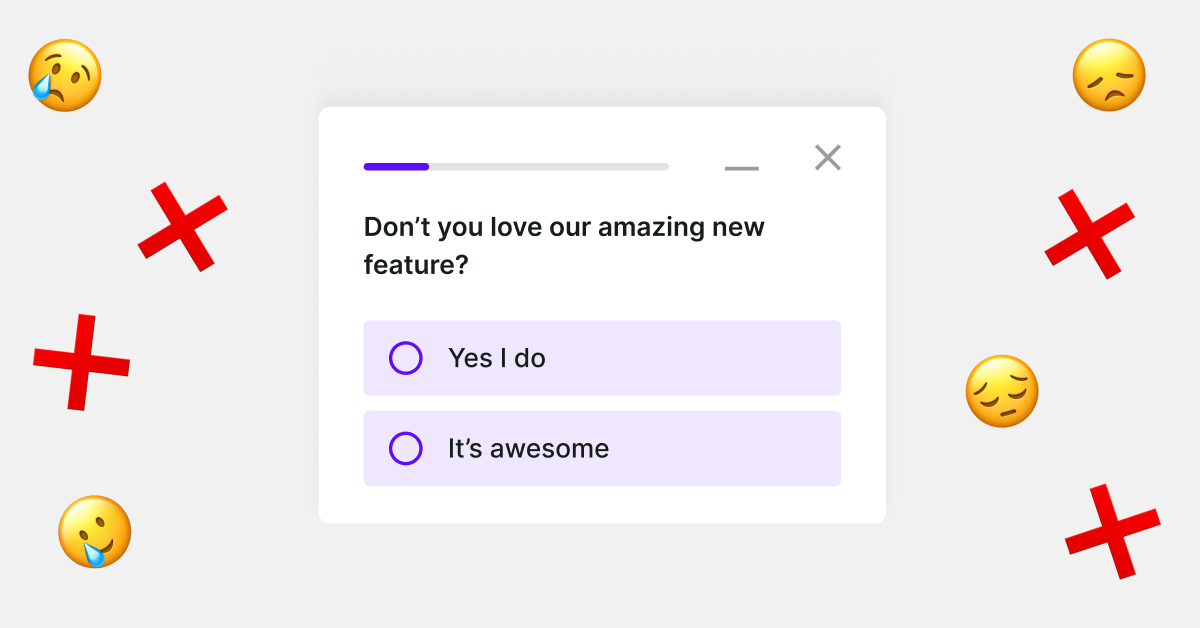

.svg)

.svg)



